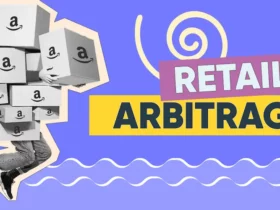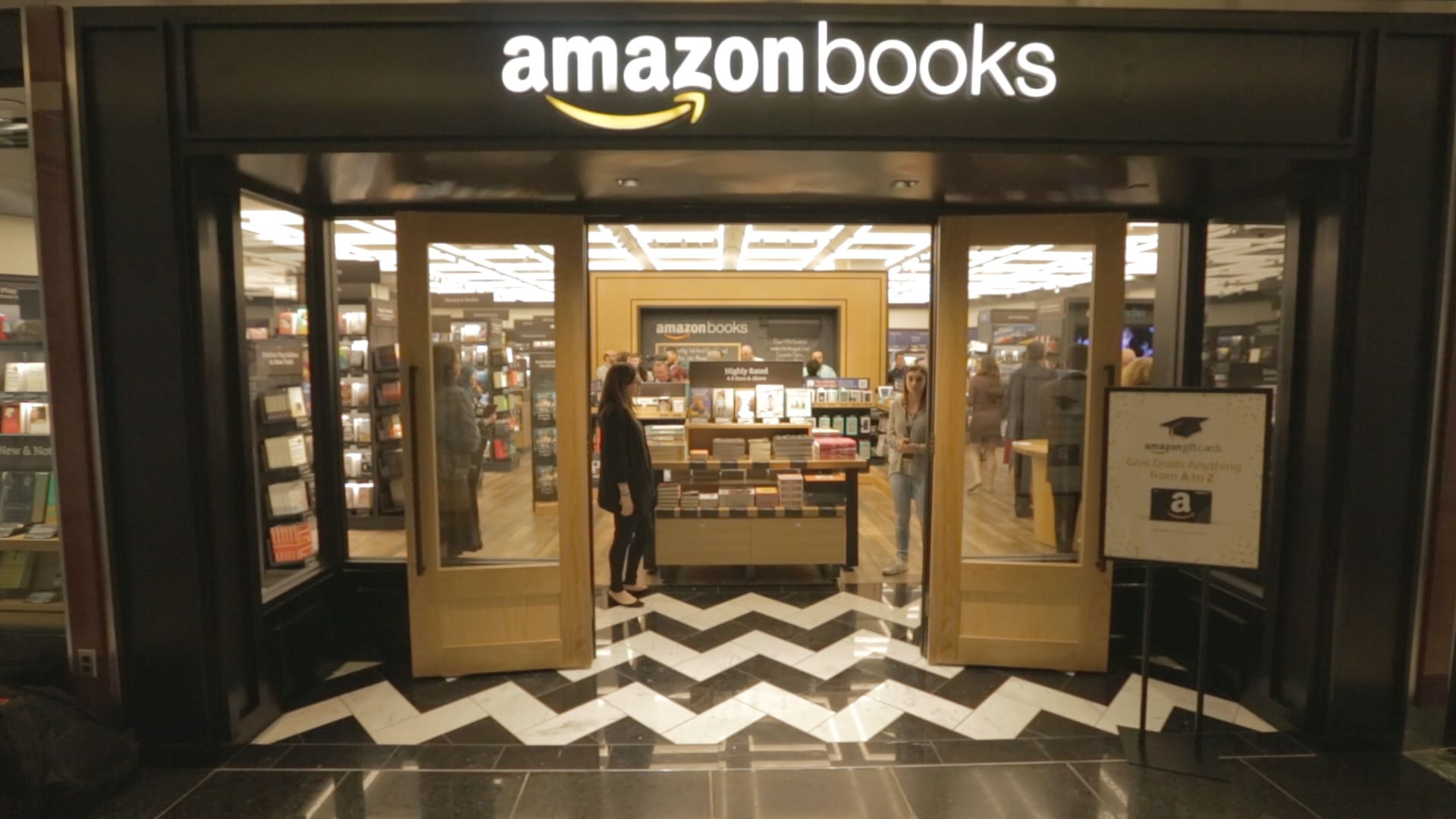As an Amazon seller, expanding your business beyond your existing operations can be a daunting task. However, with the North American Remote Fulfillment (NARF) program, Amazon has made it easier for North American eCommerce sellers to reach more customers and save money. With NARF, you can store your products in Amazon fulfillment centers located in the United States and fulfill orders to customers across Canada and Mexico.
NARF allows you to display your inventory stored in U.S. FBA warehouses on Amazon’s Canadian (amazon.ca) and Mexican (amazon.mx) marketplaces without having to ship and store inventory in either of those countries. Your U.S. inventory becomes a centralized cache, making it easier to fulfill orders to customers across North America. Buyers on Amazon Mexico and Amazon Canada are shown the available inventory at your price, plus a premium to cover the import duties.
The Amazon NARF program is an ideal way for Amazon eCommerce sellers based in North America to experiment with global expansion without having to go beyond their existing operations. With NARF, you can save money on shipping and storage costs, reach more customers, and grow your business. In this article, we will dive deeper into the NARF program, how it works, and how you can take advantage of it to expand your business.
Understanding the Narf Program
As a seller on Amazon, I am always looking for ways to expand my business and reach more customers. The North American Remote Fulfillment (NARF) program offered by Amazon is a great way to do just that. In this section, I will explain the eligibility and enrollment process, program fees, and what global SKUs are.
Eligibility and Enrollment
To be eligible for the NARF program, I need to have inventory stored in a U.S. FBA inventory. Once I have inventory in the U.S., I can enroll in the NARF program through my Amazon Seller Central account. It’s important to note that not all products are eligible for the program, so I need to make sure my products meet the requirements before enrolling.
Program Fees
There are fees associated with the NARF program, but they are generally lower than the fees for using fulfillment centers in Canada and Mexico separately. The fees include storage fees, fulfillment fees, and cross-border fees. It’s important for me to understand these fees so I can accurately calculate my costs and pricing.
Understanding Global SKUs
Global SKUs are unique identifiers assigned to products that are enrolled in the NARF program. These SKUs allow Amazon to track inventory across fulfillment centers in the U.S., Canada, and Mexico. When a customer places an order, Amazon will automatically determine the best fulfillment center to use based on the customer’s location and available inventory.
Overall, the NARF program is a great way for me to expand my business and reach more customers across North America. By understanding the eligibility and enrollment process, program fees, and global SKUs, I can make informed decisions about whether the program is right for me and my business.
Exploring the Marketplaces
When it comes to expanding your Amazon business, one of the best ways to reach more people is to sell in international Amazon marketplaces. However, that can become complicated when you have to abide by other countries’ rules, regulations, and tax codes. Fortunately, Amazon’s North America Remote Fulfillment (NARF) program simplifies the process, allowing sellers to list their products on international marketplaces like Amazon Canada and Amazon Mexico without sending inventory to those countries.
Amazon Canada
Amazon Canada (amazon.ca) is a great marketplace to explore when expanding your business. With a population of over 37 million people, it is a large and growing market. Additionally, Canada shares a border with the United States, making it an easy market to access for US-based sellers.
To sell in Canada, you will need to register for a GST/HST account and obtain a Business Number from the Canada Revenue Agency. You may also need to obtain a Provincial Sales Tax (PST) account, depending on the province in which you are selling. Once you have registered, you can start listing your products on Amazon.ca.
Amazon Mexico
Amazon Mexico (amazon.com.mx) is another great marketplace to explore. With a population of over 130 million people, it is one of the largest markets in Latin America. Additionally, Mexico has a growing middle class with increasing purchasing power, making it an attractive market for sellers.
To sell in Mexico, you will need to register for a tax identification number (RFC) and obtain a digital signature from the Mexican government. You will also need to register for a value-added tax (VAT) number and obtain a tax certificate from the Mexican government. Once you have registered, you can start listing your products on Amazon.com.mx.
In conclusion, exploring the international Amazon marketplaces can be a great way to grow your business. With the NARF program, it is easier than ever to sell in Canada and Mexico without having to send inventory to those countries. By following the registration requirements and rules for each marketplace, you can expand your customer base and increase your sales.
The Role of FBA in NARF
As an Amazon seller, I have found that using Fulfillment by Amazon (FBA) is an essential component of the North American Remote Fulfillment (NARF) program. FBA is a service provided by Amazon that allows sellers to store their inventory in Amazon’s fulfillment centers, and then Amazon picks, packs, and ships the products to customers when an order is placed.
Fulfillment Process
When using FBA with NARF, my U.S. FBA inventory is used to fulfill orders across the border, allowing me to sell my US-based products in Canadian and Mexican markets. This means I don’t have to worry about additional storage fees, customs duties, and taxes that I would have to deal with if I shipped and stored inventory in both countries.
The fulfillment process works as follows: when a customer places an order on Amazon.ca or Amazon.mx, Amazon picks the product from my U.S. FBA inventory, packs it, and ships it to the customer. This process is seamless and efficient, and it ensures that my customers receive their orders quickly and reliably.
Returns Handling
One of the advantages of using FBA with NARF is that Amazon handles returns on my behalf. If a customer from Canada or Mexico wants to return a product, they can send it back to Amazon’s fulfillment center in the United States. Amazon then inspects the product and either returns it to my inventory or disposes of it, depending on its condition.
This returns handling process is straightforward and saves me time and effort. I don’t have to worry about dealing with returns myself, and I can trust that Amazon will handle them in a professional and efficient manner.
In conclusion, FBA plays a critical role in the NARF program, allowing sellers to sell their US-based products in Canadian and Mexican markets without having to ship and store inventory in those countries. The fulfillment process is seamless and efficient, and returns handling is taken care of by Amazon, making it a hassle-free experience for sellers.
Costs and Fees Associated with Narf
As a seller looking to expand your business to international Amazon marketplaces, it’s important to understand the costs and fees associated with the North America Remote Fulfillment (NARF) program. Here’s a breakdown of the fees you can expect to pay:
Fulfillment Fees
When using NARF, you will be charged higher fulfillment fees than you would for domestic orders. This is because the program involves shipping your products from the US to Canada or Mexico. The fulfillment fees for NARF orders on Amazon.ca and Amazon.com.mx are as follows:
| Order Type | Fulfillment Fee |
|---|---|
| Standard | CAD 5.53 |
| Oversize | CAD 20.87 |
Storage Fees
Inventory storage costs are another fee you’ll need to consider when using NARF. You’ll be charged storage fees for any inventory you have stored in Amazon’s Canadian or Mexican fulfillment centers. The storage fees for NARF inventory are as follows:
| Month | Standard-Size | Oversize |
|---|---|---|
| January-September | CAD 0.69/cubic foot | CAD 0.48/cubic foot |
| October-December | CAD 2.74/cubic foot | CAD 1.93/cubic foot |
Additional Costs
In addition to fulfillment and storage fees, there may be other costs associated with using NARF. These may include:
- Program fees: There may be additional fees for participating in the NARF program.
- Referral fees: You’ll be charged referral fees based on the store where the customer buys the item.
- Higher fulfillment fees: If your NARF orders are fulfilled from multiple fulfillment centers, you may be charged higher fees.
- Import duties: Buyers on Amazon Mexico and Amazon Canada are shown the available inventory at your price, plus a premium to cover the import duties.
It’s important to carefully consider these costs and fees when deciding whether to use the NARF program to expand your business.
Navigating Logistics and Compliance
When I started selling on Amazon NARF, I quickly realized that navigating logistics and compliance could be a bit overwhelming. However, I found that with a little bit of research and effort, it was possible to get a good handle on these areas. Here are some tips that I found helpful:
Shipping and Logistics
One of the most important things to keep in mind when using NARF is that you will need to ensure that your products are shipped to the right fulfillment centers. This means that you will need to be aware of the different Amazon fulfillment centers in the United States and ensure that your products are sent to the correct one.
In addition, you will need to ensure that your products are packaged and labeled correctly. This will help to ensure that they are not damaged during shipping and that they arrive at the fulfillment center in a timely manner.
Trade Compliance and Regulations
Another important aspect of using NARF is ensuring that you are in compliance with all trade regulations and customs requirements. This includes ensuring that your products are not restricted or prohibited in the destination country and that you are paying any required import duties.
To ensure compliance, I found it helpful to work with a customs broker or freight forwarder who could help me navigate the regulations and requirements. This allowed me to focus on my business while ensuring that I was meeting all of the necessary compliance requirements.
Overall, while navigating logistics and compliance can be a bit challenging, I found that with a little bit of effort and research, it was possible to get a good handle on these areas. By ensuring that your products are shipped and labeled correctly and that you are in compliance with all trade regulations and customs requirements, you can set your business up for success on Amazon NARF.
Tax and Revenue Considerations
As an Amazon seller, expanding your business to international marketplaces such as Canada and Mexico can be a great way to increase your revenue. However, it’s important to understand the tax and revenue considerations that come with selling in these countries.
Understanding GST/HST
In Canada, the Goods and Services Tax (GST) and Harmonized Sales Tax (HST) are applied to most goods and services sold in the country. As an Amazon seller, you may be required to register for a GST/HST account and collect and remit these taxes to the Canadian government.
It’s important to note that the tax rates vary by province and territory, so it’s important to understand the local tax regulations in the areas where you plan to sell. Additionally, if you exceed a certain threshold of sales in Canada, you may also be required to register for a Provincial Sales Tax (PST) account.
Revenue and Exchange Rates
When selling in international marketplaces, it’s important to consider the impact of exchange rates on your revenue. The value of the Canadian dollar (CAD) and Mexican peso (MXN) may fluctuate against the US dollar (USD), which can impact your profits.
To mitigate this risk, it’s important to regularly monitor exchange rates and consider using a currency exchange service to convert your earnings back to USD. Additionally, it’s important to factor in any fees associated with these services when calculating your revenue.
In summary, expanding your Amazon business to international marketplaces such as Canada and Mexico can be a lucrative opportunity. However, it’s important to understand the tax and revenue considerations that come with selling in these countries. By staying informed and taking the necessary steps to comply with local regulations, you can successfully expand your business and increase your profits.
Advertising Opportunities
As a seller on Amazon’s North American Remote Fulfillment (NARF) program, I have access to advertising opportunities on both Amazon Canada and Amazon Mexico. These advertising options are an excellent way to increase product visibility and drive sales on these platforms.
Advertising on Amazon Canada
Advertising on Amazon Canada is facilitated through the Amazon Advertising Console. This platform allows me to create and manage advertising campaigns for my products on Amazon.ca. I can choose from various advertising formats, including sponsored products, sponsored brands, and sponsored display ads.
Sponsored products are pay-per-click ads that appear in search results and on product pages. Sponsored brands are ads that appear at the top of search results and feature my brand logo, a custom headline, and up to three of my products. Sponsored display ads appear on product detail pages and are targeted to customers who have viewed similar products.
By using the Amazon Advertising Console, I can track the performance of my campaigns and adjust my advertising strategy accordingly. This allows me to maximize the return on my advertising investment and drive more sales on Amazon Canada.
Advertising on Amazon Mexico
Similar to Amazon Canada, advertising on Amazon Mexico is also facilitated through the Amazon Advertising Console. I can create and manage advertising campaigns for my products on Amazon.com.mx using various advertising formats, including sponsored products, sponsored brands, and sponsored display ads.
Sponsored products are pay-per-click ads that appear in search results and on product pages. Sponsored brands are ads that appear at the top of search results and feature my brand logo, a custom headline, and up to three of my products. Sponsored display ads appear on product detail pages and are targeted to customers who have viewed similar products.
By using the Amazon Advertising Console, I can track the performance of my campaigns and adjust my advertising strategy accordingly. This allows me to maximize the return on my advertising investment and drive more sales on Amazon Mexico.
Overall, advertising on Amazon Canada and Amazon Mexico is an excellent way to increase product visibility and drive sales on these platforms. By leveraging the Amazon Advertising Console, I can create and manage advertising campaigns that are tailored to my target audience and drive more sales on these platforms.
Pros and Cons of Enrolling in Narf
Advantages
As an Amazon seller, I have found that enrolling in the North America Remote Fulfillment (NARF) program has several advantages that make it a worthwhile investment.
Firstly, NARF allows me to test new marketplaces quickly and with minimal risk. By using NARF, I can ship all my orders from the U.S. to customers in Canada and Mexico. This means that I don’t have to worry about filing or paying taxes in these countries, which can be a time-consuming and expensive process.
Secondly, customers who purchase products through NARF are responsible for paying any import duties and fees. This means that I don’t have to worry about these costs, which can be a significant barrier to international expansion.
Thirdly, enrolling in NARF is relatively easy. I can enable NARF in my Amazon account with just a few clicks, and I don’t have to create new listings or make any significant changes to my existing workflow.
Potential Drawbacks
While there are many advantages to enrolling in NARF, there are also some potential drawbacks that sellers should be aware of.
One potential drawback is that NARF can be more expensive for customers than other fulfillment options. This is because customers are responsible for paying any import duties and fees, which can add up quickly.
Another potential drawback is that exchange rates can be unpredictable, which can make it difficult to calculate the true cost of shipping products internationally. This can lead to unexpected costs and make it more challenging to manage cash flow.
Overall, I have found that the advantages of enrolling in NARF outweigh the potential drawbacks. By using NARF, I can test new marketplaces quickly and with minimal risk, which has helped me expand my business internationally.
Expanding Your Ecommerce Business
As an ecommerce business owner, I’m always looking for ways to expand my market and increase sales volume. One option I’ve found is the Amazon North American Remote Fulfillment (NARF) program.
With NARF, I can display my inventory on Canada’s and Mexico’s Amazon websites, which opens up international orders and expands my customer base. To enroll in the program, I simply go to the Remote Fulfillment with FBA page in my Amazon Seller Central account, review the program policies and fees, and follow the enrollment steps.
Once enrolled, Amazon evaluates all offers and automatically enrolls eligible items. This means that I can focus on my business, while Amazon handles the centralized cache and shipping weight for me. Plus, by using Amazon FBA, I can offer Prime customers fast and reliable shipping, which can lead to increased sales and cash flow.
As a professional Amazon seller with a Professional Selling Plan, I’m always looking for ways to grow my brand and expand my reach. By using NARF, I can take advantage of Amazon’s international marketplaces and increase my sales volume.
Overall, NARF is a great option for ecommerce business owners looking to expand their market and increase sales.
Comparing Narf with Other Programs
Narf vs FBA
As an Amazon seller, you may already be familiar with Fulfillment by Amazon (FBA). FBA allows you to store your inventory in Amazon’s warehouses and have them handle the shipping and customer service for you. However, FBA only covers the US marketplace, which means you’ll need to find other solutions if you want to expand to other countries. This is where Narf comes in.
Narf is Amazon’s North American Remote Fulfillment program, which allows you to store your inventory in US FBA warehouses and fulfill orders to customers across Canada and Mexico. With Narf, you can expand your reach to international customers without having to worry about the logistics of shipping and storing inventory in other countries.
One advantage of FBA over Narf is that FBA offers export services, which means you can sell your products to customers outside of North America. However, FBA requires you to have a Professional Selling Plan, which comes with a monthly subscription fee. Narf, on the other hand, does not require a subscription fee, making it a more cost-effective option for sellers who only want to expand to Canada and Mexico.
Narf vs eBay
Another popular platform for online sellers is eBay. eBay allows you to list your products and handle the shipping and customer service yourself. While eBay does offer international shipping options, it can be difficult to navigate the logistics of shipping to different countries.
Narf offers a more streamlined solution for sellers who want to expand to Canada and Mexico. By storing your inventory in US FBA warehouses, you can fulfill orders to international customers without having to worry about shipping and customs clearance. Additionally, Narf provides a more seamless customer experience, as customers can purchase your products directly on Amazon’s Canadian and Mexican marketplaces.
However, eBay does offer some advantages over Narf. For example, eBay has a larger global reach than Amazon, which means you may be able to reach more international customers through eBay. Additionally, eBay does not require you to have a Professional Selling Plan, which means you can start selling immediately without having to pay a subscription fee.
In conclusion, Narf offers a cost-effective and streamlined solution for Amazon sellers who want to expand to Canada and Mexico. While it may not offer the same global reach as eBay or export services as FBA, Narf provides a convenient way to reach international customers without having to navigate the complexities of international shipping and customs clearance.













